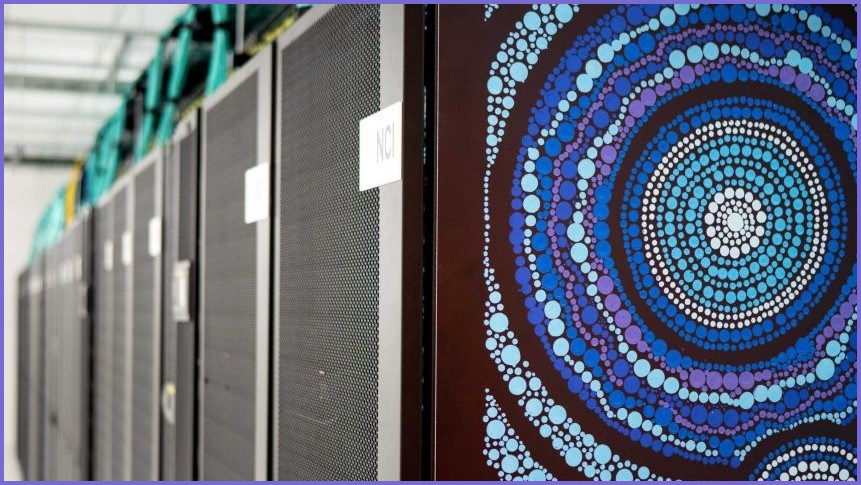Australia has announced itself as a global supercomputing force, jumping almost 20 spots in the world rankings.
‘Gadi’, a supercomputer based at the Australian National University’s National Computational Infrastructure (NCI), has placed at number 25 on the TOP500 list at the ISC High Performance Digital Conference.
This makes Gadi the most powerful computer in the Southern Hemisphere and marks its first appearance on the TOP500 list since being fully operational.
In November 2019 it ranked 47, despite still being in the first phase of development.
“The computational performance available on Gadi is unprecedented in Australia, enabling rapid response to national emergencies such as COVID-19 and bushfires that we could not have approached before” said NCI director Professor Sean Smith.
“Gadi is, quite simply, a critical foundational infrastructure for Australia and Australian research.”
Gadi achieved a performance result of 9.2 pentaflops.
As well as being Australia’s fastest supercomputer, it is also the newest supercomputer in the country.
Back in 2017, the Turnbull government pledged $70 million to replace what was then Australia’s most powerful supercomputer ‘Raijin’ – which had most recently achieved a TOP500 ranking of 239 – with Gadi.
The NCI then reached out to the research community to find out what was needed in the next supercomputer, before putting the scheme out to tender.
Fujitsu Australia secured the tender and has worked with multiple vendors in creating Gadi, including Lenovo, Intel and NVIDIA.
“Following on from the success of its predecessor, Gadi is shaping up to be another important milestone in the relationship between Fujitsu and the NCI,” said Fujitsu Australia and New Zealand CEO Mike Foster.
“Australia leads the world in many research areas and it is encouraging that this project has been made possible with Australian government funding under the National Collaborative Research Infrastructure Strategy (NCRIS).”
Putting Gadi to use
So exactly what does a computer capable of performing 9 quadrillion operations per second get used for?
“You name a science and they’re doing it,” an ANU spokesperson told Information Age.
“At any given time, there’s almost 5,000 researchers registered to use machines, and they’re all part of individual projects.
“Every single area of science touches it. It’s people who need to do computational chemistry and they’re looking for things at the molecular level, right up to climate scientists who are trying to map the entire Southern Ocean.”
Other uses include predicting natural disasters, climate forecasting and bushfire modelling.
Although Gadi does not use quantum technology, it is being used to research quantum computing, confirmed the spokesperson, as Australia continues to make developments in the space.
TOP500 list
As well as Gadi, Fujitsu is also behind the number one computer on the TOP500 list.
Having only been activated in recent months, the Fugaku supercomputer in Japan, which is powered by Fujitsu's 48-core Arm-based A64FX system-on-chip, managed to reach 415.5 petaflops of performance.
This was 2.8 times more powerful than the IBM-powered system at Oak Ridge National Laboratory in Tennessee.
Despite Japan topping the list, China and the USA are still the most competitive players in the space, securing 340 of the 500 spots between the two countries.
The supercomputer community recently combined for the COVID-19 High Performance Computing Consortium, which pooled global computing resources to help the fight against COVID-19.










